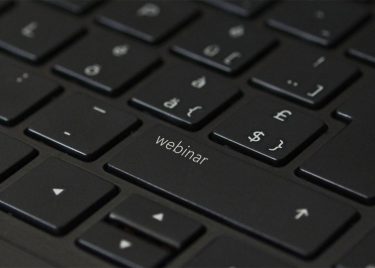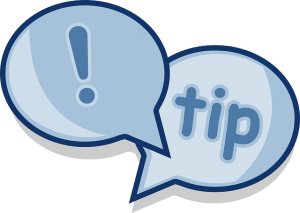Webinars have revolutionized how we share knowledge, ideas, and skills, but automated webinars take this one step further.
They're like your personal broadcasting station, ready to air your content round the clock, without you having to hit the 'live' button each time. Sounds pretty neat, doesn't it?
So, whether you're a business owner looking to expand your reach, an educator aiming to share your expertise more widely, or just a passionate individual eager to spread the word about something you love, this guide is for you.
Ready to become a master of automated webinars? Let's dive in!
Disclosure: Although I receive affiliate compensation at no additional cost to you to support this site that compensation in no way influences my recommendations, which are strictly informed by my 10+ years of online business experience consulting for clients large and small. My aim is to always recommend tools that offer the best return for your investment (for more details, read my Affiliate Disclosure).
Understanding Webinars and Their Importance
First things first, let's get our basics right. A webinar, short for web-based seminar, is a presentation, lecture, workshop or seminar that's transmitted over the web.
Now, an automated webinar, as the name suggests, is a pre-recorded webinar that can be scheduled and played back at any time. You're right, it's pretty nifty!
Automated webinars have a unique advantage — they give you the power to reach your audience without you physically having to be present each time.
Imagine being able to share your knowledge and maybe even earning money while you sleep. Neat, isn't it?
Key Components of an Automated Webinar
Before we dive into the how-tos, let's talk about what you need. Here are the key components for your automated webinar:
Webinar Platform: This is the software that'll host your webinar. More on this later.
Content: Your presentation, the heart of your webinar. This could be a slideshow, a talk, a demo, anything you wish to share.
Automation Features: Features that allow your webinar to run on autopilot. This includes scheduling, replays, and automated emails.
Promotion: Methods to let the world know about your webinar.
Choosing the Right Webinar Platform

Choosing the right platform is a big deal, and you've got to nail it. Here's how:
Supports Automation: The platform must support automation and not all do. This is non-negotiable, so make sure to read the fine print before you sign up. You're looking to create an automated webinar, after all.
User-Friendly Interface: Your platform should be easy to navigate for both you and your attendees. A complicated interface could turn off potential viewers.
Budget-Friendly: Cost matters. You want a platform that gives you the best value for your money. Pay attention to the features offered and see if they justify the cost.
Top-rated Platforms: Some platforms that are well-loved in the industry include EverWebinar, Demio, and EasyWebinar. Each has its own strengths, so see what fits your needs the best.
Research & Free Trials: Read reviews, compare features, and make use of free trials before making a decision.
Planning Your Webinar Content
Content is indeed king. So, here's what you need to focus on:
Identify Your Audience
Who are you creating this webinar for? What are their interests, needs, and problems you can solve? The more you know about your audience, the more relevant your content will be.
Outline Your Presentation
Start with a clear outline. Begin with an introduction that hooks your audience, follow with the main points, and wrap up with a compelling conclusion.
Engagement is Key
Engage your audience with interactive elements like polls, quizzes, or a Q&A session. This makes your webinar feel more like a conversation and less like a lecture.
Recording Your Webinar
Now, let's get that webinar recorded. Here's how:
Conversational Tone: Pretend you're talking to a friend. Keep the tone light and conversational to make your audience feel connected to you.
Clarity & Confidence: Speak clearly and confidently. This will make you come across as an authority in your field, which can help build trust with your audience.
Recording Tools: Use a reliable tool for recording your webinar. Zoom or OBS Studio are good options. Make sure you're comfortable with the software before you start recording.
Rehearse: Practice your webinar a few times before recording. This will help you deliver your content smoothly and confidently.
Setting Up Your Webinar Automation
Once your webinar is recorded, here's how you set up the automation:
Upload Your Recording: Your first step is to upload your webinar recording onto your chosen platform.
Schedule Replay Times: Decide when you want your webinar replay to be available and schedule these times on the platform.
Automated Emails: Set up automated emails for registration confirmations, reminders before the webinar starts, and follow-ups after the webinar ends. These emails help keep your webinar top-of-mind for your audience.
Promoting Your Automated Webinar
Your webinar is ready to shine. Let's get it in front of people:
Promotion Channels
Use multiple channels to promote your webinar. This could be your website, social media accounts, email newsletters, or even partnerships with other relevant organizations.
Registration Page
Create a compelling registration page that clearly communicates the benefits of attending your webinar. This is your sales pitch, make it count!
Pique Interest
Your goal is to make your audience curious and excited about your webinar. Use engaging language, highlight the key takeaways, and explain how your webinar can provide value to them.
Use Social Proof:
If you have testimonials from previous webinars or endorsements from industry leaders, use them. Social proof can significantly boost registrations.
Early Bird Incentives
Consider offering early bird incentives like discounts, bonus content, or exclusive Q&A sessions. These can encourage quick sign-ups and create buzz.
Tips for a Successful Automated Webinar
Alright, you've now got the basics. Now, let's get into some advanced moves to take your automated webinar from "just another webinar" to "wow, that was incredible!"
Quality Matters:
Invest in Good Tech: It's crucial to invest in good quality equipment. Clear audio and video can significantly improve your audience's experience. A good microphone and camera can make your webinar appear professional and reliable.
Light it Right: Lighting is key in video presentations. Make sure your face is well-lit and clear, with no distracting shadows.
Stable Internet Connection: A stable and robust internet connection is a must. You don't want to be that person whose webinar cuts out mid-sentence, do you?
Engage Your Audience:

Interactive Elements: Even though your webinar is pre-recorded, it doesn't have to be a one-way street. Include interactive elements like polls, quizzes, or even a chatbot for FAQs.
Audience Participation: Encourage your audience to participate. This could be by asking them to submit questions beforehand or encouraging them to share their thoughts and comments during the webinar.
Personalize the Experience: Use your audience's data to personalize the webinar experience. Address them by their names in emails, or tailor content to their interests.
Practice, Practice, Practice:
Rehearse: The more comfortable you are with your content, the more confident and natural you'll sound. So, rehearse before you record.
Timing: Keep an eye on the clock. Ensure your webinar is not too long to lose interest and not too short to leave out important information.
Tweak and Improve: Use your practice sessions to identify areas of improvement. Every practice session is an opportunity to make your webinar better.
Keep it Real:
Conversational Tone: Even though it's pre-recorded, your webinar should feel like a real-time conversation. Use a conversational tone, tell stories, use humor — make it as human and as real as possible.
Be Yourself: Don't try to be someone you're not. Authenticity resonates with people. Be yourself, and your audience will appreciate it.
Show Passion: Show your passion for your topic. Enthusiasm is contagious, and it can help keep your audience engaged and interested.
Test Everything:
Webinar Flow: Test your webinar from start to finish. Make sure it flows smoothly and logically.
Automation: Ensure that all your automation works perfectly. This includes email sequences, replay availability, interactive elements, and anything else that you've automated.
Platform Compatibility: Check that your webinar works well across different devices and browsers. You don't want technical glitches ruining your audience's experience.
Don't Forget to Follow Up:
Thank You Email: Send a thank you email after the webinar. This small gesture can help you build a lasting relationship with your audience.
Ask for Feedback: Encourage your audience to provide feedback. This is invaluable for improving future webinars.
Share Additional Resources: Provide additional resources related to your topic. This could be blog posts, e-books, or videos. This not only provides value to your audience but also keeps them engaged with your content even after the webinar.
By incorporating these tips into your webinar strategy, you'll be on your way to delivering a truly memorable and impactful automated webinar.
Remember, the key is to provide value, engage your audience, and keep refining your approach based on feedback and performance.
In Conclusion
Automated webinars are powerful tools for scaling your impact, whether you're in business, education, or just passionate about a topic. They're the golden ticket to extending your message to a global audience, irrespective of time zones, work schedules, or other commitments.
But remember, at the heart of every successful automated webinar is value. No amount of automation can substitute for valuable, engaging content.
So, focus on what you want to share, make it as compelling and insightful as you can, and let your passion shine through. That's the secret sauce that'll make your webinar resonate with your audience.







